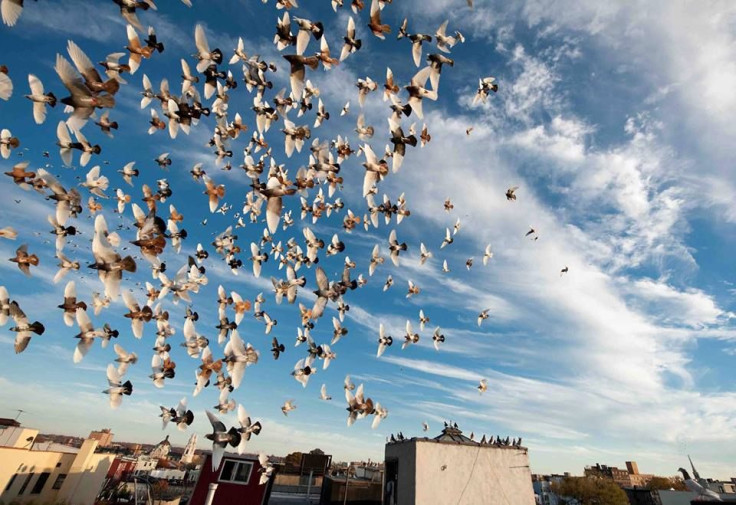Do Flocks of Birds Have A Leader? Researchers Study Pigeon Flights

There are reportedly 7 million pigeons in New York, among other common species. Based on these numbers, birds flying together from one way to another is nothing special. But who calls the shots for their next destination? Is there a "leader bird" or do they take a vote?
Scientists from Southeast University and China University of Mining and Technology have attempted to understand such coordinated behavior — as can also be seen in the case of fish, insects or bacteria — by studying the synchronized flight of pigeon flocks.
Earlier, it was considered that the coordinated behavior birds exhibit inflight adhered to three rules:
1. Do not collide with your flock mate.
2. Fly at the same speed and in the same direction as your flock.
3. Stay close to the center.
After seeing how every pigeon in the flock was affected by another member, researchers felt that there was more to the behavior than meets the eye concerning group dynamics. They examined the flying pattern of three flocks comprising 10 pigeons each.
They found several trends in place when it came to moving together as one. The part each pigeon played boiled down to factors such as flock position.
"Interestingly, the individuals closer to the mass center and the average velocity direction are more influential to others, which means location and flight direction are two factors that matter in their interactions," Duxin Chen, author of the study and an assistant professor at Southeast University in China, said.
Inflight competition between the birds was found to be intense. The hierarchy during flight also differs from the factors determining a pigeon's social dominance. At some point, every pigeon would have played the influencer and in turn been influenced by its neighboring flock mate. They oscillate between these roles throughout the flight duration.
The data also indicated that during sudden turns or zigzags, leadership was momentarily conferred to the pigeon in front. Otherwise, the leadership was fixed in long-term homing flights.
"Understanding the underlying coordination mechanism of these appealing phenomena helps us gain more cognition of the world where we live," Chen said.
© Copyright IBTimes 2025. All rights reserved.





















